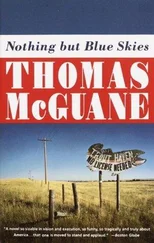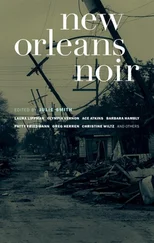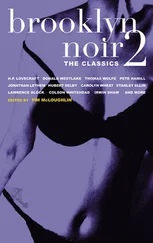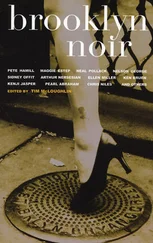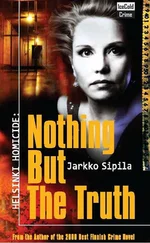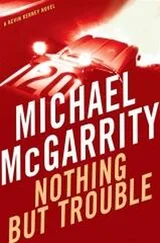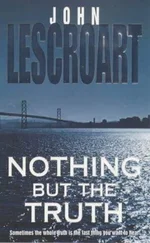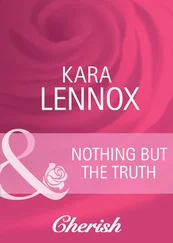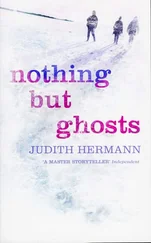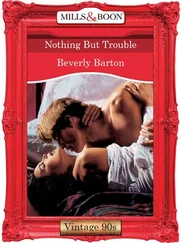And one regular patron dead — so far.
Irving Matos went home one night to his basement apartment and did what his sort of mogul does: He eased himself into a lazy-boy lounger and watched television.
There was a knock outside, and then an insistent doorbell. He got up to answer it. He saw it was Sakai, looking his usual cool. Matos invited him in. They sat there and watched the TV.
After some brief catching up on the news about Sweet Cherry, Sakai said it was time for him to shove off. Don’t get up , he told Matos. I’ll show myself out .
Then he pulled a pistol from his coat and fired into the rear of Matos’s skull.
Sakai confessed as much to the police.
After a week or so, the DeNicola brothers began wondering about Irving Matos. Maybe he got the flu bug or something.
They called the police to investigate, after encountering an unbearable stench coming from his apartment. They found the decomposing body of Irving Matos, age forty-two, in front of the blinking television.
Brooklyn police put the Matos murder together with the Tyson murder: Both were no-forced-entry jobs, both were connected to Sweet Cherry, and the name Stephen Sakai was on the list of known associates of both corpses.
So was Eric Mojica.
Sakai found Mojica before the cops could.
A few weeks after Matos was found dead, Mojica turned up dead as well.
It took three murders to put the police onto Sakai’s trail.
On May 23, 2006, the 11 o’clock TV news helped the cops find Sakai.
Stephen Sakai, with three alleged murders under his gun-holding belt, was working as a bouncer at Opus 22, a hip nightspot in Manhattan’s Chelsea district. A couple of drunkards got into a fight outside the club, and Sakai would have none of it. He pulled out his .45 caliber and fired away. After the mêlée was over, the cops found four men shot, one fatally.
They picked up Sakai in Brooklyn a few hours later. He denied it all at first, but then a short time later, after some police persuasion, he admitted to being the gunman at Opus 22. He also admitted killing Matos, but denied killing Tyson. Still, they charged him with murdering Tyson and Matos— and Mojica.
By June of 2006, the ire of the people of Sunset Park had reached a boiling point, and now scorched the entire city.
Another bouncer had been accused of murder, this time by the Manhattan district attorney. A young woman named Imette St. Guillen had disappeared from a nightspot called The Falls, located in Soho. She was found dead the next morning, the alleged victim of a bouncer named Darryl Littlejohn, an armed thug with a criminal record. Thus did the city commence a crackdown.
Targets included the bouncers themselves and the hiring process clubs used — if any. The city urged greater background checks and tougher licensing procedures for both security and gun permits. Stephen Sakai had a security license, but not a gun permit.
And for Sweet Cherry, Lazzaro’s streak of magic finally came to an end. With drug and solicitation charges pending against his client, the DeNicola brothers, Lazzaro cut a deal with the New York City Police Department, the Brooklyn D.A., and the New York State Attorney General’s Office.
All felony charges were dropped and a civil suit was averted, while rape charges against Bertonazzi were also dismissed.
Robert Messner, assistant commissioner for the Civil Enforcement Unit of the Police Department’s Legal Bureau, called the deal “a very good example of cooperation by multiple agencies.” Sweet Cherry ponied up $50,000 in fines. No jail sentences, no probation. The DeNicola brothers pled guilty to misdemeanor drug charges, and were barred from ever again operating a nightclub in Kings County. All other charges were dismissed.
Stephen Sakai spent his nights on Rikers Island, awaiting trial in Brooklyn on three counts of murder in the second degree. He was later acquitted on one count and convicted on the other two; he now faces fifty years to life in prison. Meanwhile, he is still awaiting trial in connection with the fatal shooting at Opus 22.
Darryl Littlejohn, meanwhile, is also locked up, awaiting his day in court on charges of murdering Imette St. Guillen.
It was all over. The violence, the drugs, the sex — all of it over, just like that.
On the night of June 22, 2006, down on the promenade of Brooklyn Heights, families laughed and played and ate pizza and ice cream. The movie shoot in Cobble Hill was over, and Spider-Man slung his last web out of town.
Down under the Brooklyn Bridge, a newlywed couple held hands and had their picture taken.
In the neighborhood of Sunset Park, it was quiet on 42nd Street. The gates were pulled low on the entrance to Sweet Cherry. The lights were off, the deejay booth was silent, the bar was dry.
“It wasn’t pretty, and neither were the girls,” says Jorge. “But it was loud and it was fun, you know what I’m saying?”
He crushes his empty coffee cup, strolls to the corner, and flips it into a garbage can.
“I’m going to miss this.” Jorge looks at me, then the club. As he walks off, he says, “Take it easy, my friend.”
I think, Remorse — for a strip club?
Editors’ note [1] Some of the information in this essay was originally reported in “The Nine Lives of a Topless Bar: Complaints Hit a Wall of Law” by Michael Brick (New York Times, May 31, 2006) and “Strip Parlor Closes as Part of Plea Deal” by Michael Brick (New York Times , June 21, 2006).
The ghetto never sleeps, mister policeman
by Robert Leuci
Atlantic Yards
My father was born and raised in East New York, on Hull Street and Hopkinson Avenue, one block off Fulton. He’d tell you he came from Brownsville; that’s the way he chose to remember it, and he spoke of his neighborhood devotedly.
The only member of his family born in this country, Pop was one hell of a ballplayer and a devoted follower of the socialist and East Harlem congressman, Vito Marcantonio. Pop loved Brownsville and was proud of its socialist history. When I became a cop we hardly ever discussed politics; in the 1960s, we hardly spoke at all.
In the back of my mind where memories flourish, I often think of Brownsville. As a kid growing up in Ozone Park — Pop thought Queens, just across the Bayside and Acacia cemeteries from Brooklyn, was best for us — I went every weekend to the street markets of Brownsville to shop with my mother. Her name was Lucy and she called Brownsville “Jew-town.”
One summer Sunday morning, I was playing stickball with my buddy Norman Bliestien. My mother drove by the playground to pick me up. In those days, going Sunday-morning shopping with my mother was at least as important as, say, going to the Crossbay Theater with the neighborhood guys to watch a movie. Or possibly my first sexual experience.
“Normie, I have to go shopping with my mom,” I tell him. “I gotta go.”
“Where you going?”
“Jew-town.”
“Where?” says Normie.
“Jew-town in Brooklyn. Pitkin Avenue, Stone Avenue. Down there.”
“That’s Brownsville. What are you, a moron?”
I’d always thought that Jew-town was the name of the neighborhood, like Ozone Park where we lived, or Richmond Hill or maybe Polack Alley in Woodhaven. I was ten years old, so what did I know?
Brownsville in those years was awesome. On Belmont Avenue — Stone and Pitkin too — there were rows of pushcarts heavy with vegetables and fruits and pistachio nuts and great round, thick, chocolate-covered halvah rings that were shoulder-to-shoulder with immense loaves of black breads, bagels, bialys, and pickles in enormous wooden barrels. In the shops there were appliances and clothing and shoes — special sample shoes, the only ones that would fit my mother, whose feet were tiny.
Читать дальше

